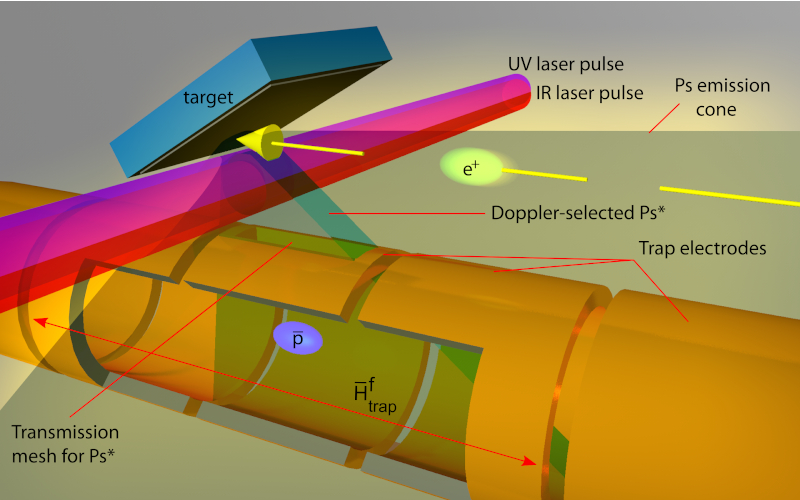Pulsed production of antihydrogen
Cold antihydrogen atoms (with K or sub-K temperature) are a powerful tool to precisely probe the validity of fundamental physics laws. The design of highly sensitive experiments needs antihydrogen with controllable and well defined conditions: energy, position, quantum number and time of the production. The paper of the AEgIS collaboration "Pulsed production of antihydrogen" published on 8 Feb. 2021 on Communications Physics (https://www.nature.com/articles/s42005-020-00494-z) presents experimental results on the production of antihydrogen in a pulsed mode in which the time when 90% of the atoms are produced is known with an uncertainty of ~250 ns, about 1000 times more accurate than previously attained. This is the first time in which we know when the antihydrogen atoms are produced. Previous experimentally demonstrated schemes of H¯ production did not allow tagging the time of the formation with accuracy.
The results are based on the data collected at CERN during the 2018 with antiprotons delivered by the Antiproton Decelerator.
The pulsed source is generated by the charge-exchange reaction between Rydberg positronium atoms—produced via the injection of a pulsed positron beam into a nanochanneled Si target, and excited by laser pulses—and antiprotons, trapped, cooled and manipulated in electromagnetic traps (see figure).
The results have been obtained during the last year of data taking with antiproton at CERN in 2018. They mark a milestone in the field of trapping, manipulating and detecting charged particles, producing and exciting positronium and forming and detecting antihydrogen.
The number of observed events is 79, while only 33.4 ± 4.6 events are expected under the hypothesis of absence of antihydrogen formation and the probability that the observation is not antihydrogen is then only about 1 in 3.5 million.
The agreement between the observed and expected number of antihydrogen allows predicting that a significantly larger (by some orders of magnitude) flux of anti-atoms will be available in an optimized experimental geometry and with an increased number of antiprotons and positronium atoms.
The result is then a major landmark in the first phase of the AEgIS experiment aiming, on the long term, to perform direct measurements of the validity of the Weak Equivalence Principle for antimatter.
